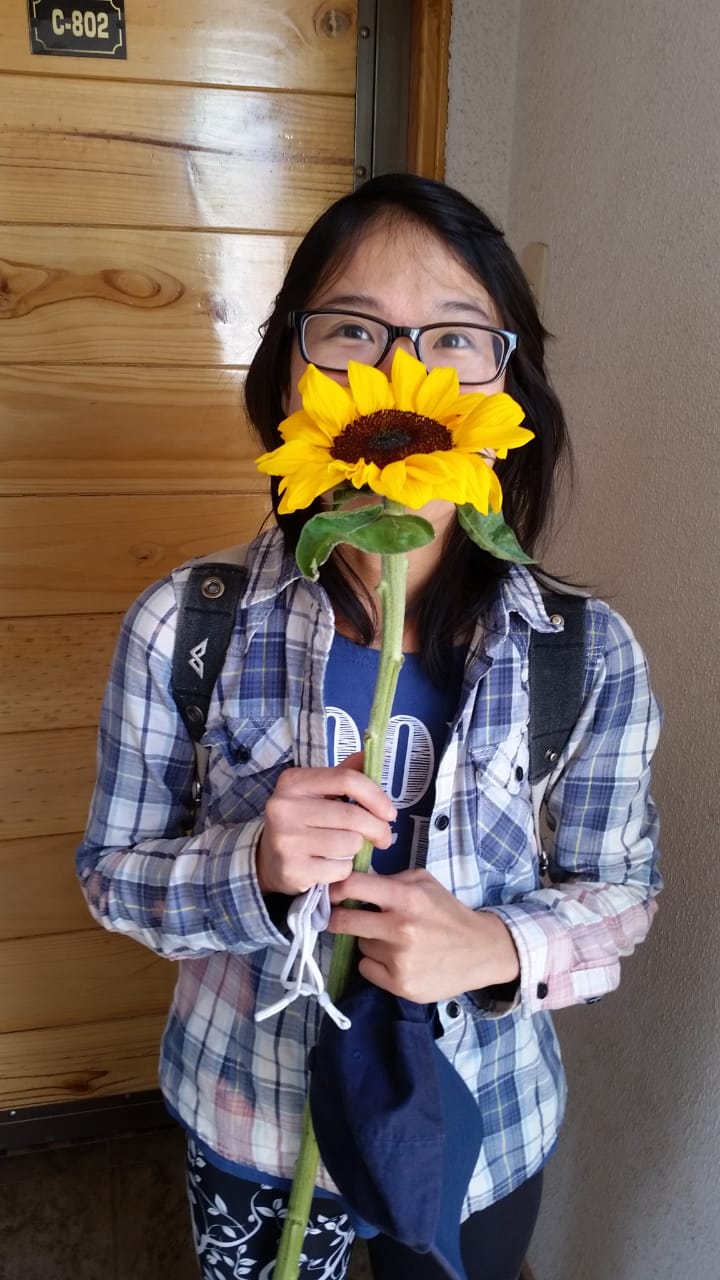发表的文章 Academic Publications
1. Feng J., Mak H., Wang J., Cai Q. How characters are learned leaves its marks on the neural substrates of Chinese Reading. (2022) eNeuro 9 (6).2. Lasnick O., Feng J., Quirion A., Hart S., Hoeft F. (2022) The Reading League Journal.
3. Cui S., Song S., Si J., Wu M., Feng J. (2021) The influence of mouth opening and closing degrees on processing in NimStim facial expressions: An ERP study from Chinese college students. International Journal of Psychophysiology, vol 162.
4. Song S., Feng J., Wu M., Tang B., Chen G. (2017) Gender Role Differences of Female College Students in Facial Expression Recognition: Evidence from N170 and VPP. In: Zeng Y. et al. (eds) Brain Informatics. BI 2017. Lecture Notes in Computer Science, vol 10654. Springer, Cham
参加的会议 Academic Conferences
1. Poster presentation at Society for the Neurobiological Language (SNL), 2019, “Reading acquisition of Chinese as a second language using pinyin and writing strategies”.2. Poster and oral presentation at Lecture Notes in Computer Science (LNCS), 2017, “Gender Role Differences of Female College Students in Facial Expression Recognition: Evidence from N170 and VPP”.
3. Poster presentation at Organization for Human Brain Mapping (OHBM), 2017, “Disgust and Fear Work Differently on LPP: The Modulations of Faces and Scenes”.
__________________________________________________________________________________________________
技能 Research Skills
Neuroscience Research Related
1. fMRI Analysis: SPM, AFNI, FSL2. ERP Analysis: MATLAB
3. Experiments Presenter: E-prime, PsychoPy, Psychtoolbox, Presentation
4. MRI/TMS/ERP/Psychological Assessment/ Qualtrics Data Collection/MRI Mock Scanner usage
5. Participants Recruitment/Data management with REDCAP/IRB
Programming & Statistics
1. MATLAB: Advanced2. R: Upper-intermediate
3. SPSS: Advanced
4. MPlus: Upper-intermediate
5. Unix: Intermediate
6. Python: Intermediate
7. Git/GitHub: Intermediate
__________________________________________________________________________________________________
相关的教育经历 Education
2019 - 2021 心理科学 两年博士学习和工作 美国康尼狄格大学 Graduate Coursework in Psychological Sciences, University of Connecticut, USA
Research focus: Neuromechanism of flexibility and resilience in Dyslexia (PI: Prof. Fumiko Hoeft)(GPA 3.81, 52 credits finished)
2016 - 2019 认知神经科学 理学硕士 华东师范大学 MSc. in Cognitive Neuroscience, East China Normal University, China
Research topic: Neuromechanism of learning Chinese as a second language (PI: Prof. Qing Cai)(GPA 3.69, 35 credits, Graduated with Honors, Recommended Postgraduate)
2012 - 2016 应用心理学 理学学士 济南大学 B.S. in Applied Psychology, University of Jinan, China
Research topic: Neuromechanism of facial expression recognition (PI: AP. Sutao Song)(GPA 4.08, Graduated with Honors, National Scholarship Recipient with Honors)
__________________________________________________________________________________________________
研究经历 Research Experience
08/2019 - 08/2021 BrainLENS-East Lab, Reading and Dyslexia, Department of Psychological Sciences, University of Connecticut, USA
1. Supervised by Professor Fumiko Hoeft Ph.D. M.D.2. Main Project: Neural mechanisms underlying compensation in Dyslexia, *longitudinal study (5 visits)*, with neuropsychological assessments, TMS and multimodal MRI (fMRI, DWI, MRS, Resting State) and saliva sample.
(1) Worked as the project leader of a multi-center NIH R01 grant project, including: (2) Cross-center project management: work timeline, database management, hosting meetings, budgeting, coping with project materials and required paperwork
(3) External communication and coordination with the Georgia state team (3 principal investigators and 3 research assistants);
(4) Internal management with personnel arrangement, training, and communication on the East Coast team (20 people in total, 2 principal investigators, 2 postdoc staff, 3 MRI technicians, 3 research assistants, 10 undergraduate assistants);
(5) Worked as the primary MRI personnel and TMS helper, including MRI data collection, analysis, and management; helping TMS operation;
(6) Worked as the primary project contact personnel, including participant recruitment, appointment scheduling, billing and emergency contact.
2. Finished an NIH R01 funding proposal, manuscripts writing and publication
09/2016 - 06/2019 CaiLab, Language Cognition and Development, Institute of Cognitive Science, East China Normal University, China
1. Supervised by Professor Qing Cai Ph.D.2. Main Project: Neural mechanisms of pinyin and writing in L2 Chinese word reading (L2: second language), *longitudinal study (2 visits & 7-day training session)*, with neuropsychological assessments and fMRI.
(1) Role: project leader, study design, data collection, data analysis, paper writing.
(2) The study mainly focuses on neural mechanisms for Chinese second language learning of English natives, with different learning strategies (pinyin, writing), and tested in 3 modalities, visual, auditory, and visual-auditory.
(3) Aims: (1) to study changes in neural mechanisms and visual retinotopic mappings between strategies; (2) using cognitive test data, to check whether we can predict second language proficiency; (3) and in bilingual reading, to compare universal and specific brain signature cross-languages.
2. Side Project: Word reading, writing and pinyin in 6-year-old children, *longitudinal study (2 visits)*, with neuropsychological assessments and multimodal MRI (fMRI, DWI and Resting State).
06/2014 - 06/2016 Facial Expression Recognition, School of Educational Psychology, University of Jinan, China
1. Supervised by Associate Professor Sutao Song Ph.D.2. Multiple Projects: Emotional faces and scenes recognition, with ERP
(1) The influence of facial feature in emotional faces recognition in NimStim.
- Role: project leader, study design, data collection, data analysis, paper writing.
- Our work involved the modulation of tiny features in facial expression recognition on some early components, e.g. N170, P100, VPP.
(2) Gender role differences of female college students in facial expression recognition.
- Role: project leader, study design, data collection, data analysis, paper writing.
- We focused on the psychological factor in facial expression recognition, i.e. the gender role and its effect on N170 and VPP by the comparison between emotional states.
(3) Disgust and Fear works differently on LPP, the modulation of emotional faces and scenes.
- Role: project leader, study design, data collection, data analysis, paper writing.
- The study was about modulations of facial expression recognition, particularly on the distinction of disgust and fear. Unlike previous projects, we mainly test the mid- and long-term ERP components, like EPN and LPP in this study.
__________________________________________________________________________________________________
To feel it, to experience it, and to enjoy it.
Stay authentic, stay curious, stay healthy.
